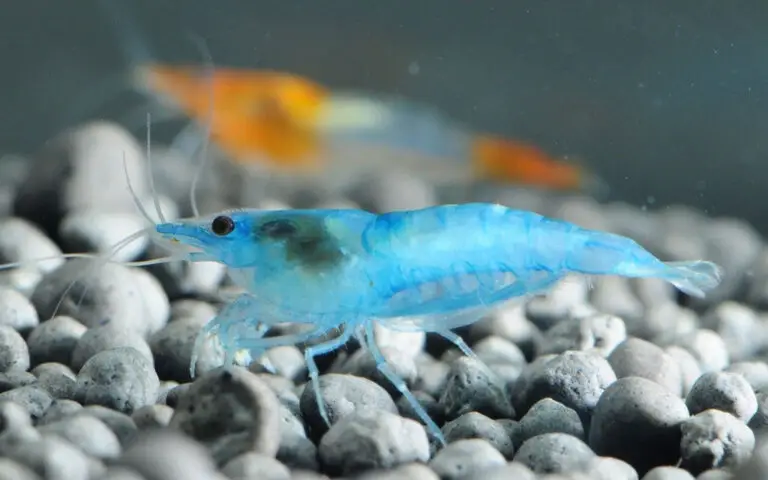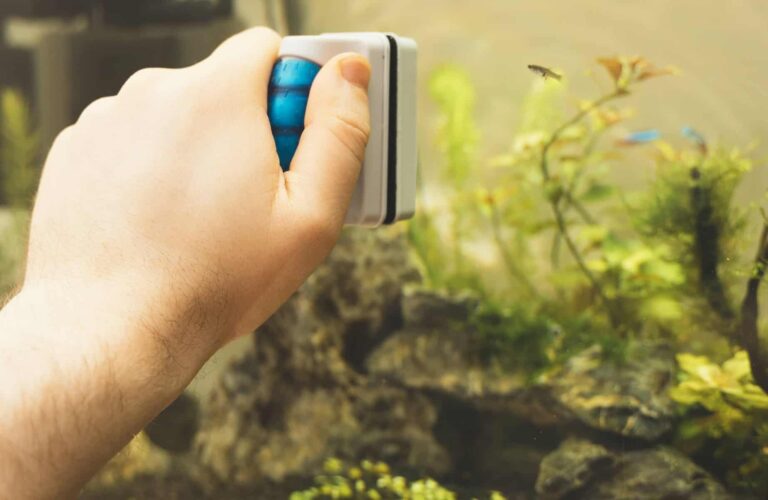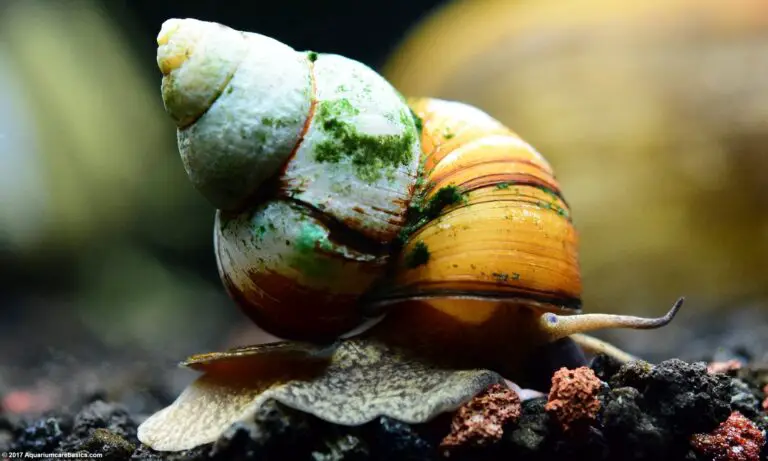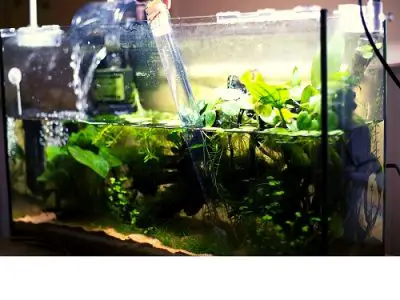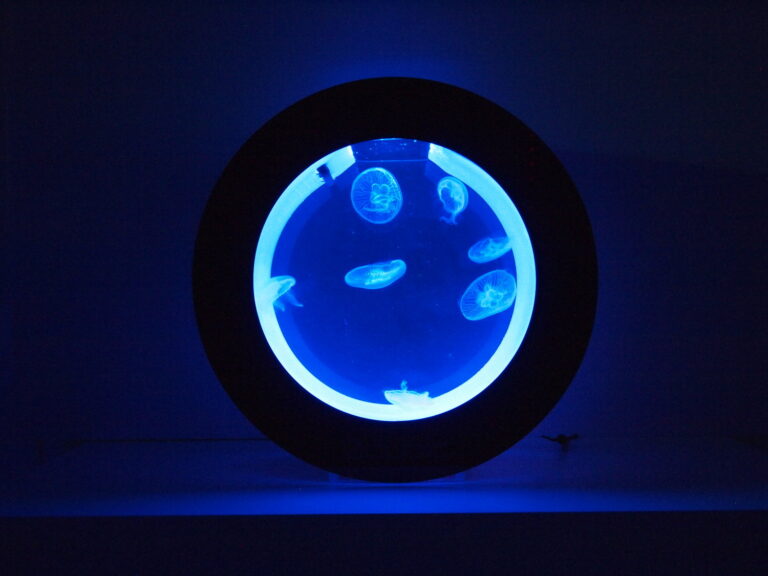Is Fish Tank Mold Dangerous to Humans? Exploring the Risks and Precautions
Fish tanks can be a beautiful addition to any home or office, providing a calming and natural ambiance. However, like any other household item, they require proper maintenance to avoid potential hazards.
One of the most common issues that fish tank owners face is mold growth. While mold is unsightly and can damage the tank’s ecosystem.
Understanding fish tank mold is the first step in answering this question. Fish tank mold is a type of fungus that thrives in warm, damp environments.
It can grow on any surface, including the glass walls of the tank, the substrate, and even the decorations.
Mold can cause a variety of health problems, including respiratory issues, skin irritation, and allergies.
However, not all types of mold are harmful, and it is essential to identify the specific type of mold present in the fish tank to determine the potential risks.
- Fish tank mold is a type of fungus that can thrive in warm, damp environments.
- Mold can cause a variety of health problems, including respiratory issues, skin irritation, and allergies.
- Identifying the specific type of mold present in the fish tank is essential to determine the potential risks.
Understanding Fish Tank Mold
Types of Mold in Aquariums
Mold in fish tanks is a common problem that every aquarium owner should be aware of. There are several types of mold that can grow in aquariums, including:
- Black Mold: This type of mold is the most common in fish tanks. It is caused by a fungus called Aspergillus niger and is typically found on decaying organic matter.
- Green Mold: This type of mold is caused by a fungus called Penicillium and is often found on wet surfaces.
- White Mold: This type of mold is caused by a fungus called Saprolegnia and is often found on dead fish or decaying plant matter.
Causes of Mold Growth
Mold growth in fish tanks can be caused by a variety of factors, including:
- Poor Water Quality: Poor water quality can lead to the growth of mold in fish tanks. This can be caused by overfeeding, overstocking, or insufficient filtration.
- High Humidity: High humidity in the room where the fish tank is located can also lead to mold growth.
- Dead Organic Matter: Dead fish, plants, and uneaten food can all contribute to the growth of mold in fish tanks.
- Lack of Airflow: Lack of airflow in the fish tank can also lead to mold growth.
To prevent mold growth in fish tanks, it is important to maintain good water quality, remove dead organic matter promptly, and provide adequate airflow. Regular cleaning and maintenance of the fish tank can help prevent mold growth.
Health Risks of Mold Exposure
Mold is a common problem in many homes, and it can grow in various places, including fish tanks. Exposure to mold can cause a range of health problems, from mild allergic reactions to serious respiratory issues and mold toxicity.
Respiratory Issues
Exposure to mold can irritate the respiratory system and cause symptoms such as coughing, wheezing, and shortness of breath.
People with pre-existing respiratory conditions, such as asthma, may be more susceptible to these symptoms.
In severe cases, mold exposure can lead to respiratory infections, such as bronchitis or pneumonia.
Allergic Reactions
Mold exposure can also trigger allergic reactions, such as sneezing, runny nose, and itchy eyes.
These symptoms can be particularly severe in people with allergies or asthma. In some cases, exposure to mold can also cause skin irritation and rashes.
Mold Toxicity
In rare cases, exposure to mold can lead to mold toxicity, which can cause a range of symptoms, including fatigue, headaches, and memory problems.
Mold toxicity is more likely to occur in people who are exposed to high levels of mold over a prolonged period.
It is essential to take steps to prevent mold growth and address any mold problems promptly.
Exposure to mold in fish tanks can pose a range of health risks to humans. It is essential to take steps to prevent mold growth and address any mold problems as soon as possible.
If you experience any symptoms of mold exposure, such as respiratory issues or allergic reactions, seek medical attention promptly.
Preventing Mold in Fish Tanks
Mold can be a serious problem in fish tanks, not just for the health of your fish, but also for your own health. Here are some tips to prevent mold growth in your fish tank:
Regular Maintenance
Regular maintenance is the key to preventing mold growth in your fish tank.
This includes changing the water regularly, cleaning the tank and its accessories, and removing any uneaten food or waste from the tank.
It is also important to check the temperature and pH levels of the water regularly to ensure that they are within the appropriate range for your fish.
Proper Filtration
Proper filtration is another important factor in preventing mold growth in your fish tank.
A good filter can remove excess food, waste, and other debris from the water, which can help prevent mold growth.
Be sure to choose a filter that is appropriate for the size of your tank and the type of fish you have.
Controlling Humidity
Controlling humidity is also important in preventing mold growth in your fish tank.
Mold thrives in humid environments, so it is important to keep the humidity level in your tank low.
You can do this by using a dehumidifier or by placing a fan near the tank to circulate the air.
By following these tips, you can prevent mold growth in your fish tank and ensure the health of your fish and yourself.
Cleaning Mold Infestations
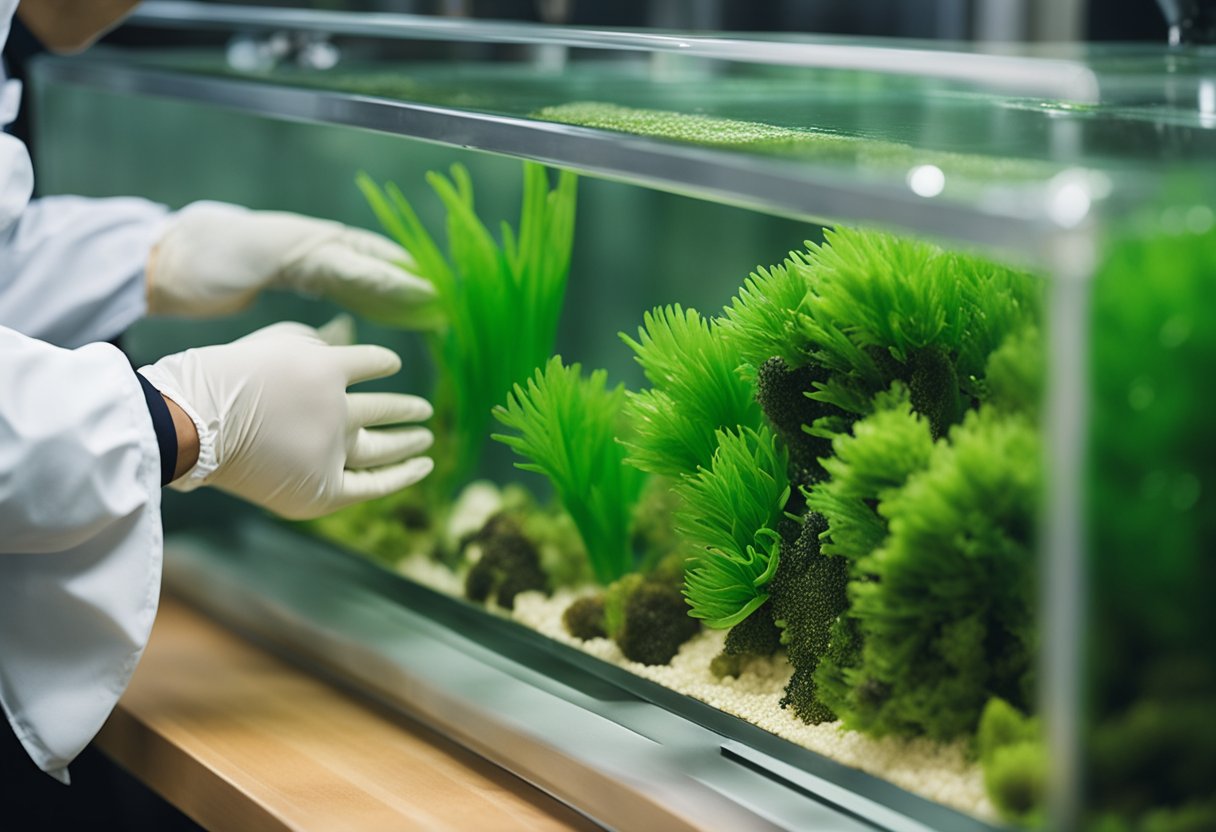
If you notice mold in your fish tank, it’s important to take action immediately. Not only is mold unsightly, but it can also be a health hazard to both you and your fish.
Here are some safe cleaning practices, chemical treatments, and natural remedies to help you get rid of mold infestations in your fish tank.
Safe Cleaning Practices
The first step in cleaning mold from your fish tank is to remove any affected objects, such as plants or decorations.
These should be thoroughly cleaned and disinfected before being returned to the tank.
Next, use a clean, damp cloth or sponge to wipe down the inside of the tank, being careful not to disturb the gravel or disturb the fish.
Avoid using harsh chemicals or abrasive materials, as these can harm your fish and damage the tank.
Chemical Treatments
If the mold infestation is severe, you may need to use a chemical treatment to eliminate it.
However, it’s important to choose a product that is safe for your fish and won’t harm the environment.
Look for treatments that are specifically designed for use in fish tanks and follow the instructions carefully.
Be sure to remove any activated carbon from your filter before using a chemical treatment, as it can absorb the treatment and render it ineffective.
Natural Remedies
If you prefer a more natural approach to cleaning mold from your fish tank, there are several remedies you can try.
One option is to add a small amount of aquarium salt to the water, which can help to kill mold spores.
Another option is to add a few drops of tea tree oil to the tank, which has antifungal properties.
Be sure to research any natural remedies before using them, as some can be harmful to fish or may not be effective against certain types of mold.
By following these safe cleaning practices, chemical treatments, and natural remedies, you can effectively eliminate mold infestations in your fish tank and keep your fish and yourself healthy.
Professional Assessment and Remediation
As I mentioned earlier, mold growth in fish tanks can pose a potential risk to human health.
If you suspect that the mold in your fish tank is causing health problems, it is important to seek professional help.
Professional assessment of the mold growth in your fish tank can help identify the type of mold present and the severity of the problem.
A thorough assessment can also help determine the extent of contamination and any potential health risks.
Remediation of mold in fish tanks should be done by a professional with experience in mold remediation.
The remediation process typically involves removing the contaminated water and cleaning the tank with a bleach solution.
It is important to follow the correct procedures and use the appropriate equipment to ensure that the mold is completely removed.
It is also important to take steps to prevent future mold growth in your fish tank. This can include regular cleaning and maintenance of the tank, proper filtration, and monitoring the water quality.
In summary, if you suspect that mold in your fish tank is causing health problems, seek professional help.
A professional assessment can help identify the type and severity of the problem, and remediation should be done by a professional with experience in mold remediation.
Taking steps to prevent future mold growth can also help ensure the health and safety of both your fish and yourself.

